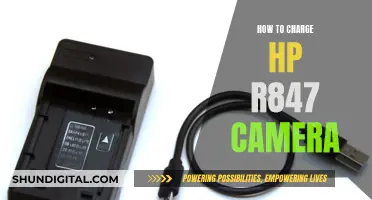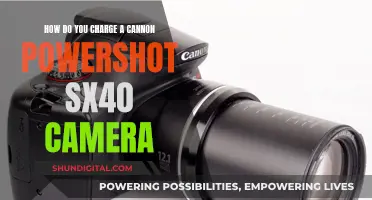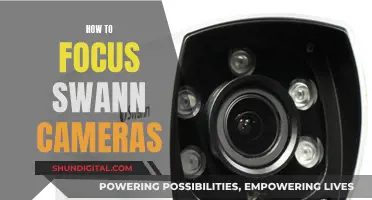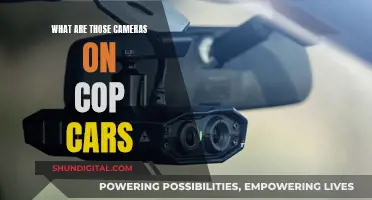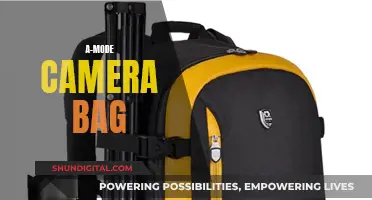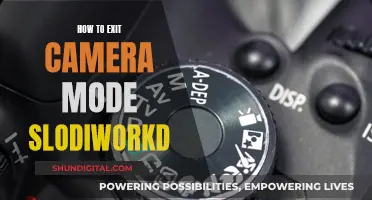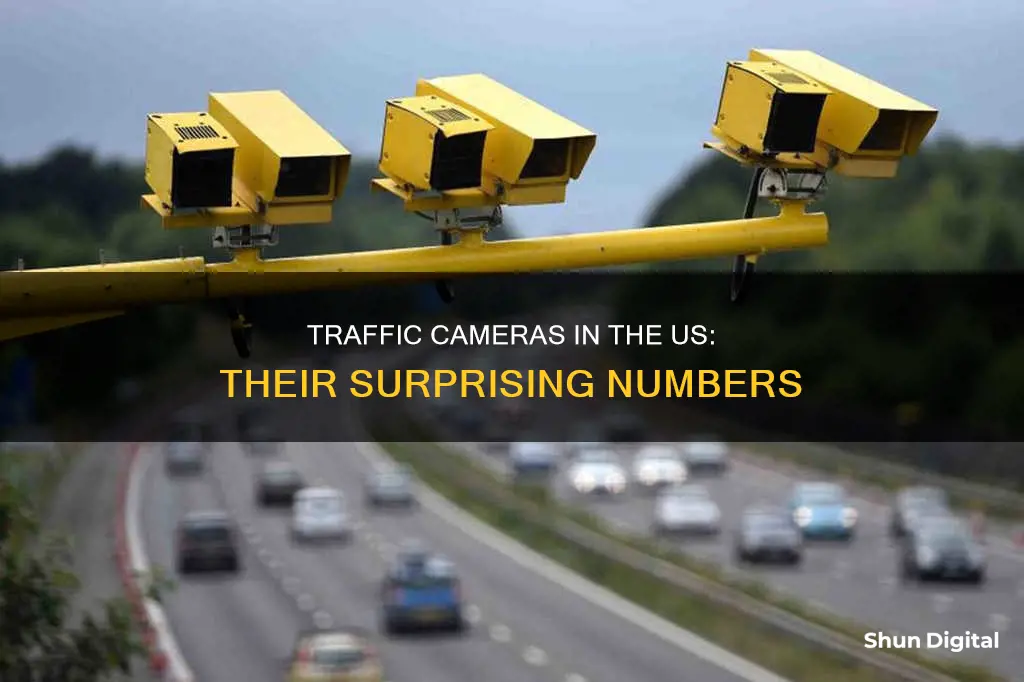
Traffic cameras are an increasingly common feature of roads in the US, with thousands of red light and speed cameras in operation across the country. These cameras are used to enforce traffic signals and speed limits, capturing violations and vehicle license plate numbers. While many states use these cameras for enforcing traffic laws, the practice remains controversial, with questions raised about public safety, privacy, and drivers' rights.
The use of traffic cameras varies significantly from state to state, with some banning their use entirely, while others employ them extensively. For example, California allows speed camera programs in some cities, while Texas prohibits the use of red light and speeding traffic enforcement cameras.
The number of traffic cameras in the US is difficult to pinpoint, as some states and cities keep their locations secret. However, estimates place the figure at over 4,000, with Washington, DC, known for its innovation in this area, having the highest number in the country.
This topic explores the evolving landscape of traffic enforcement in the US, where technology plays an increasingly prominent role in monitoring and enforcing road safety.
| Characteristics | Values |
|---|---|
| Number of Traffic Cameras | 4,150 (as of 2015) |
| Number of Red Light Cameras | 3,699 (as of 2015) |
| Number of Speed Cameras | 1,413 (as of 2015) |
| Total Number of Cameras | More than 5,000 (as of 2024) |
| State with the Most Traffic Cameras | Washington, D.C. |
| State with the Most Speed Cameras | New York (speculated) |
What You'll Learn

The number of traffic cameras in the US
Another source, World Population Review, mentions that there are more than 5,000 speed cameras in the American database as of 2024. However, it's important to note that this number may not include all traffic cameras, as some states and cities may not disclose the exact number or location of their cameras.
The use of traffic cameras for enforcement of traffic laws is a highly controversial topic in the US. While many states utilize these cameras, some states have banned their use due to concerns about public safety, privacy, and drivers' rights. The legality and implementation of traffic cameras vary from state to state, with some states banning them entirely, while others allow local governments to set up their own programs.
Traffic cameras have been credited with reducing accidents and improving road safety. For example, a study by the UK Department for Transport estimated that cameras led to a 22% reduction in personal injury collisions and a 42% decrease in fatalities and serious injuries at camera sites. On the other hand, there are concerns about the potential for governments to use these cameras for mass surveillance and the possibility of infringing on drivers' privacy.
Car Cameras: What Are These Devices Officially Named?
You may want to see also

The distribution of traffic cameras across states
The distribution of traffic cameras across the United States varies, with some states choosing to implement them for speed and red-light enforcement, while others prohibit their use altogether. As of 2024, there are over 5,000 speed cameras in the American database, with the exact number of red-light cameras being more difficult to pinpoint due to the secrecy surrounding their placement in certain states.
Washington, D.C. is known for having the most traffic cameras in the country, with a dense concentration within the metro area. This is particularly notable as Washington is not one of the largest cities in the country. The district is also recognized for its innovation in embedding cameras within stop signs rather than solely relying on traffic lights.
New York, on the other hand, maintains a high level of secrecy regarding its traffic cameras, making it challenging to determine the exact number and their locations. This secrecy is intentional, as disclosing this information would enable residents and travelers to adjust their driving behavior just enough to avoid being caught, defeating the purpose of these enforcement measures.
Maryland stands out for its dynamic approach to camera placement, regularly changing the locations of its speeding cameras. This strategy has proven effective in reducing speeding incidents, especially within metropolitan areas close to Washington, D.C.
Missouri presents a legally complex situation regarding speed cameras. While they are technically legal in the state, decisions by the Missouri Supreme Court have made tickets issued via speed cameras virtually unenforceable. The court objected to the absence of "points" on the driver's record, which is required for all moving violations, and the shift of the "burden of proof" onto the vehicle owner to prove their innocence.
In summary, the distribution of traffic cameras across states in the US varies, with Washington, D.C. leading the way in terms of numbers and innovation, while states like New York prefer secrecy to maintain the effectiveness of their enforcement measures. Maryland's dynamic approach to camera placement and Missouri's legal complexities surrounding speed cameras also stand out in the national landscape of traffic camera usage.
Troubleshooting Galaxy S5 Camera Focus Issues
You may want to see also

The types of traffic cameras used
Traffic cameras are distinct from road safety cameras, which are installed to enforce road rules by capturing still photos of violations. On the other hand, traffic cameras are meant solely for observation and continuously record low-resolution videos.
Red Light Cameras
Red light cameras capture images of vehicles that go through an intersection where the light is red. They are triggered when a vehicle enters the intersection above a preset minimum speed and after a specified time following the signal turning red. These cameras are also used to capture texting-while-driving violators. They are often placed within busy intersections in cities.
Speed Cameras
Speed cameras monitor compliance with speed limits and may use technologies like Doppler radar, LIDAR, stereo vision, or automatic number-plate recognition. They can be fixed, mounted on poles, or mobile, set up by law enforcement and moved as needed. Speed cameras are often placed in less populated areas, such as back roads or residential areas.
Bus Lane Cameras
Bus lane cameras are used to detect vehicles that are using bus lanes without authorisation. Some systems use a sensor in the road that triggers a number-plate recognition camera, while others use cameras mounted on buses themselves.
Noise Pollution Cameras
Noise enforcement cameras are used to monitor and enforce compliance with local or national vehicle noise limits. They consist of a microphone linked to an automatic number-plate recognition video camera. When the microphone detects a vehicle emitting a sound above a pre-set decibel limit, the camera captures the vehicle's registration, allowing for enforcement action.
Automated Number-Plate Recognition (ANPR) Cameras
ANPR cameras are often found at intersections and can automatically read and analyse license plate numbers. They are used for tracking the locations of certain vehicles and drivers by pulling information from government databases. These cameras can be either mobile or fixed.
Speeding Tickets: When to Expect That Camera Ticket
You may want to see also

The manufacturers of traffic cameras
Traffic cameras are an essential component of intelligent transportation systems, aiding in road safety, traffic monitoring, and enforcement of traffic rules. The manufacturers of these traffic cameras play a crucial role in this industry, and here's an overview of the key players:
RedFlex and ATS
They are the two main manufacturers of traffic cameras in the United States. RedFlex Traffic Systems, based in Phoenix, Arizona, has provided over 2,000 red-light cameras across the United States and Canada. The company retains up to 88% of the proceeds from traffic violations caught using its equipment, generating revenues exceeding $92 million in 2011. RedFlex has faced some controversies, including a case in Cary, North Carolina, where 31 false violations were reported, leading to the cancellation of their contract with the city.
American Traffic Solutions, Inc. (ATS)
ATS is an Arizona-based company that provides technology-enabled solutions for road safety camera operations. They supply more than 3,000 red-light cameras to 28 states and parts of Canada. Interestingly, one-third of ATS is owned by Goldman Sachs, and the company retains up to 86% of the profit from their red-light cameras. They have faced legal challenges regarding the constitutionality of their traffic cameras but have prevailed in court decisions.
Affiliated Computer Services (ACS)
ACS, a former Fortune 500 company based in Dallas, Texas, is a subsidiary of the Xerox Corporation. Operating in over 100 countries, ACS provides red-light cameras to cities across North America through its Transportation Solutions Group. The company has faced ethical controversies, with its then-CEO and CFO resigning in 2005 due to unethical business practices.
Imperx
Imperx is a global manufacturer and supplier of traffic and transportation cameras, offering a range of CCD and CMOS camera models. Their cameras are used worldwide, including in North America, Asia, Europe, and India. Imperx cameras are known for their rugged quality, high resolution, high speed, and numerous programmable features. With up to 14 different output modes and various triggering options, Imperx cameras are a popular choice for demanding commercial applications.
Modern Warfare Mod: Wireless Camera Placement Strategies
You may want to see also

The legal status of traffic cameras in the US
In some states, the decision to implement traffic cameras is left to local governments or individual jurisdictions. This means that the use of traffic cameras can vary significantly even within the same state. For example, in Iowa, some areas like Council Bluffs have local ordinances allowing the use of traffic cameras, while other parts of the state may not have any cameras at all.
The legality of traffic cameras has been the subject of much debate and controversy in the US. Proponents argue that they improve road safety and reduce accidents, while opponents raise concerns about privacy, public safety, and drivers' rights. There have also been questions about the effectiveness of traffic cameras in reducing crashes and the potential for governments to use them for mass surveillance.
Additionally, the use of traffic cameras has been challenged in court on several occasions. For instance, in Missouri, the state Supreme Court ruled that automated traffic enforcement programs were unconstitutional unless the state could provide proof of the driver's identity at the time of the offense. In another case, pictures from red light camera systems in San Diego were ruled inadmissible as court evidence due to a lack of oversight and issues with the method of compensation for private contractors.
The specific laws and regulations regarding traffic cameras can change over time, so it's always important to consult the most up-to-date information for your particular state or locality.
Troubleshooting Camera Raw: Why It Reads Wrong
You may want to see also
Frequently asked questions
There are more than 5,000 traffic cameras in the US, including both speed and red light cameras.
The locations of traffic cameras vary by state and city. Washington, D.C. has the highest number of traffic cameras, followed by New York City.
No, the use of traffic cameras varies by state law. Some states ban automated traffic cameras statewide, while others allow local governments to set up their own camera programs.
Yes, in some states, you can receive a traffic violation if a camera detects speeding or running a red light. The use of traffic cameras for enforcement is controversial, raising questions about public safety, privacy, and drivers' rights.


